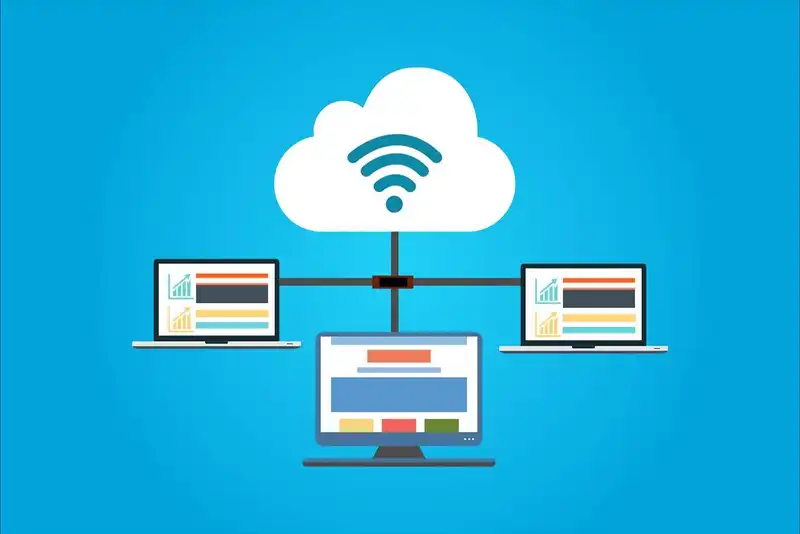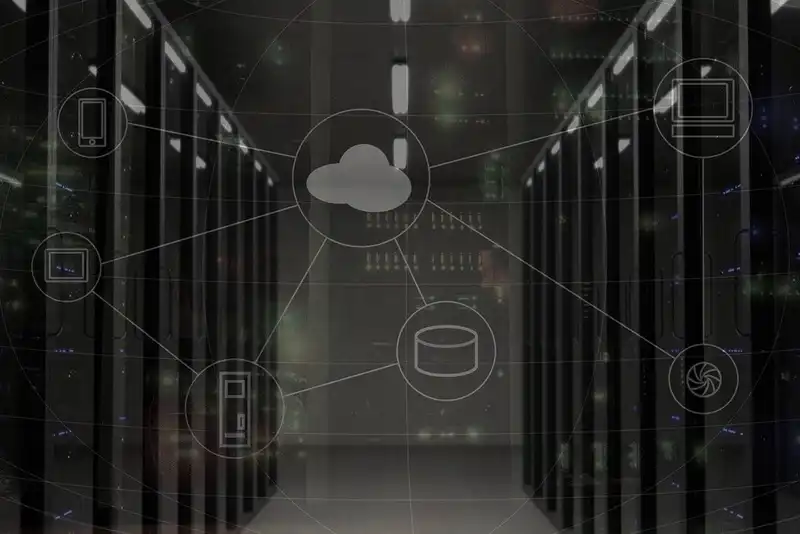Cloud solutions
Complete Guide to Business Cloud Solutions- Types, Benefits, & More
November 04, 2020

Cloud computing has been one of the biggest drivers of digital transformation for many organizations around the world, from Fortune 500 companies to startups.
In one study, 67% of business leaders considered cloud-native solutions as integral to their company's competitiveness. Meanwhile, a Harvard Business Review report shows that 70% of companies have already adopted cloud solutions, while 71% see it as the key to optimizing their business processes.
Unsurprisingly, enthusiasm over cloud computing has only made the cloud into one of the biggest business trends in recent years. However, there are real and demonstrable reasons why cloud solutions have taken the world of IT and business by storm.
Defining Cloud Solutions

The cloud in cloud computing is an environment that typically comprises data and applications hosted in offsite servers accessible over the Internet.
Cloud solutions, also known as cloud services, are a way of delivering applications, services, storage, and content to end-users over the Internet - a process known as virtualization. This setup is in direct contrast to on-premise computing or local hosting, where data, software, and applications are installed on user machines, such as computers or data centers.
Cloud providers offer a wide range of cloud solutions, such as data storage and backups, business applications, virtual machines, chatbots, software, and data analytics, all of which are usually available to businesses on a pay-for-use basis.
Having these IT resources residing in the cloud means that they can be administered by authorized users from anywhere and anytime, often on any device connected to the Internet. Cloud environments also make it easier for teams to collaborate and work on shared projects, regardless of team members' locations. As long as users have an Internet connection and a compatible web browser, they can access everything in their cloud computing environment.
Businesses leverage the computing power and storage capacity of cloud platforms to achieve economies of scale and reduce their operating costs. These savings, in turn, can be passed on to customers in the form of lower price tags.
Types of Cloud Computing Solutions
Organizations planning a cloud migration may find themselves intimidated by the sheer variety of cloud solutions available to them. Most cloud services, however, fall under three types of environments and four types of service models.
3 Cloud Delivery Methods

When planning a plan migration or adopting a cloud service, organizations must decide what type of computing environment to choose- hosted cloud, on-premises, and hybrid cloud.
1. Hosted Cloud
A hosted cloud solution deploys all of the applications and resources the business needs in a public cloud environment and allows for new applications to be developed on a low or high-level cloud infrastructure. Hosted cloud solutions are owned, managed, and maintained by cloud service providers, which charge users subscription fees that can be paid monthly, quarterly, or annually.
2. On-Premises
On-premise systems (also known as on-prem) are installed and run on computers on the premises of the organization using the software. However, they can still be moved (at least partially) to a cloud environment.
On-premise cloud solutions use virtualization and resource management tools to move assets into a secure environment - a setup called the private cloud. On-premise solutions are ideal for companies that need to keep sensitive resources private while providing clients and customers with a front-end interface. They do not, however, come with the full benefits of cloud environments.
3. Hybrid Cloud
A hybrid cloud solution combines a hosted cloud platform with on-premise infrastructure and typically uses proprietary software to enable communication between each service.
This setup provides businesses with the flexibility to move workloads and services that don't need to be on-premises (due to security requirements) to the cloud. At the same time, a hybrid environment gives companies more agility as they don't have to fully rely on third-party cloud providers to secure their workloads.
4 Cloud Service Models Types

Businesses can choose from four types of cloud service models.
1. Infrastructure-as-a-Service (IaaS)
The IaaS model provides organizations with the infrastructure to migrate and develop their workloads and applications in the cloud. It's ideal for businesses that require computing power and advanced resources such as cloud storage, virtual machines, and networking capabilities.
Crucially, IaaS services are modular, allowing organizations to avoid large capital expenditures by paying only for the resources they need.
2. Platform as a Service (PaaS)
PaaS solutions provide organizations with the tools to develop, configure, customize, and test applications without having to purchase the infrastructure itself. Such tools can include artificial intelligence (AI) services, database, and application integration among others. Because PaaS providers manage the backend of the tools they provide, this eliminates the need to have in-house staff to manage them.
3. Software-as-a-Service (SaaS)
In the SaaS model, business users pay to use pre-built software hosted by a cloud service provider on a subscription basis. This form of cloud computing is perhaps the most popular model, with solutions designed for a variety of business needs, from project management and collaboration to marketing and sales. SaaS-based solutions are also usually the fastest and most affordable way for small businesses to migrate their processes to the cloud.
4. Functions as a Service (FaaS)
The FaaS model is an entirely new approach to cloud computing that allows users to develop, run, and manage applications quickly and efficiently. There is no dependence on virtual machines as the cloud environment executes application code without having to build infrastructure or install anything.
Building an application using this model is a way to achieve a serverless environment while keeping costs low. The cloud provider only charges for the computing resources needed to execute the application, not for the number of virtual machines used.
The Difference Between Public and Private Cloud Services

Organizations planning a cloud migration will also have to decide between a public or private cloud environment. Either option has its pros and cons.
- Public Cloud
With the public cloud, service providers offer resources such as storage, virtual machines, and networking functions to multiple users and user groups on a pay-per-use or subscription basis.
When organizations use the public cloud, the provider is responsible for the backend processes. This includes servers, data storage systems, virtual machines, and other resources that create the cloud environment.
While public clouds tend to have a negative reputation of being insecure and inflexible to the specific needs of businesses, proper tenant isolation can provide the security and customization users need.
- Private Cloud
If public clouds are used by multiple organizations and users, private clouds are the exact opposite as they are exclusive to one entity. As the name suggests, a private cloud offers the benefit of privacy, made possible by using a secure firewall and hosting the cloud infrastructure in an isolated network.
The downside of private clouds, however, is that they tend to be expensive. In fact, they may not be feasible for small and medium-sized enterprises with small IT budgets. Apart from the high cost of deploying resources in a private cloud, businesses also have to consider the cost of managing, maintaining, and updating their data centers, software, and hardware, which are tasks that belong to their in-house teams.
Benefits of Adopting Cloud Solutions

While cloud computing is undoubtedly the way of the future, it's not uncommon for organizations to have questions about what it brings to the table and if it's worth the cost. Below are some of the key benefits of adopting cloud solutions.
- Cost Reduction
- Improved IT Security
Contrary to what some organizations think, storing data and accessing IT resources on the cloud tends to be safer than on-premise servers. This is because cloud service providers have the resources to monitor security around the clock, which is more efficient than a traditional in-house security system. Data that travels between networks and is stored on cloud databases are also encrypted, providing an added layer of security.
- Mobility
- Real-time Insights
For example, when a business's procurement team releases a purchase order (PO) using cloud-based enterprise resource planning (ERP) software, the PO is also instantly visible to other departments. The internal process for approving the PO is also faster, more efficient, and less likely to be affected by human error.
- Enhanced Flexibility
By migrating their applications, data, and IT resources to a third-party cloud specialist, businesses can spend less time managing their IT infrastructure and more time on activities that directly affect their bottom line.
- Disaster Recovery
Why Businesses Should Start with a Cloud-based POS System

Businesses that want to adopt a cloud solution but are not sure of where to begin can look at processes that can benefit most from cloud migration. For restaurants and retail businesses, for example, the traditional point-of-sale is a good place to start.
A cloud-based POS system is usually a SaaS-based platform that processes and stores sales data online instead of on a local computer or on-premises server. In most cases, the frontend interface is designed to be accessed on any device connected to the Internet, such as a computer, tablet device, or smartphone. On the other hand, the backend of these systems can be accessed through a web browser.
Among the top benefits of cloud-based POS systems is their ability to be integrated with inventory and accounting programs. This provides a seamless system for monitoring stock levels in real-time and ensuring the accounting department gets accurate records of all sales transactions.
Bottom line? Growing companies need IT resources that not only keep up with their growth but also play a critical role in driving it. For small businesses, cloud migration is no longer a matter of if, but when.

The Rise of Fast Food Automation and What It Means for the Industry
2023-02-23
Read More

The Best Digital Wallet Apps in 2022 That Will Save You Money
